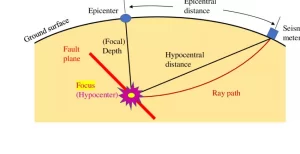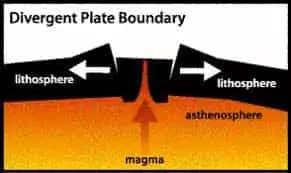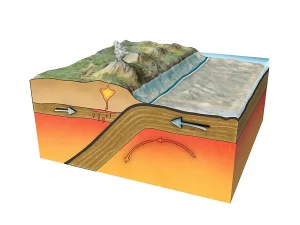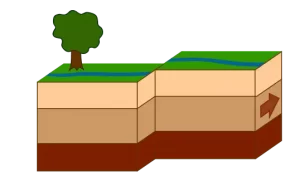Table of Contents
1. Earthquake Terminology
Here are the earthquake terminology used during the study of earthquake detail:

a. Epicenter:
It is the position on the earth’s surface vertically above the place of the hypocentre of an earthquake. This position is expressed by its geographical latitude and longitude.
b. Hypocentre or Focus:
It is the center position of the earth from where seismic waves start.
c. Focal depth:
Focal depth is the vertical distance between the hypocentre and epicenter.
d. Magnitude:
It is the quantity to measure the size of an earthquake in terms of its energy and is independent of the place of the observation.
e. Richter Scale:
Magnitude is measured on the basis of the ground motion recorded by an instrument and applying a standard correction for the epicentral distance from the recording station. It is linearly related to the logarithm of the amount of energy released by an earthquake and is expressed in the Richter Scale.
f. Intensity:
It is the rating of the effects of an earthquake at a particular place based on the observations of the affected areas, using a descriptive scale-like Modified Mercalli Scale.
g. Divergent:
Tectonic plates move apart.

h. Convergent:
Tectonic plates coming together.

i. Transform:
Tectonic plates move past each other.

j. Normal Fault
Normal, or Dip-slip, faults may be defined as the inclined cracks where the blocks have majorly moved vertically. The hanging wall moves downward.

k. Reverse Fault
A reverse fault is also known as a thrust fault if the dip of the fault plane is tiny. In a reverse fault, the earth on one side passes up and over the other side.

l. Strike-Slip Fault
The strike-slip fault is also known as a transcurrent fault, wrench fault, or lateral fault. Strike-Slip faults are vertical or nearly vertical cracks where the blocks have majorly moved horizontally.

m. Seismometer
A seismometer is the inner component of the seismograph, which may be a pendulum or a mass attached to a spring.
n. Seismograph
The seismograph can measure the strength and duration of the earthquake’s waves. A seismograph is a primary earthquake recording device.
o. Seismogram
The seismograph makes a digital graphic measuring the ground motion by the seismic waves. The digital measuring device is called a seismogram.
p. Mainshock
The largest earthquake.
q. Foreshocks
The earthquakes that arrive before larger earthquakes in a similar place.
r. Aftershocks
The earthquakes arrived after the largest shock of an earthquake series.
s. Fault
A fault is a broken or area of fractures between two masses of rock.
t. Seismic Waves
Seismic waves are waves of energy that move through the Earth’s layers.
These were the most used earthquake terminology.
| Read Also: Interesting Facts About Earthquakes |
